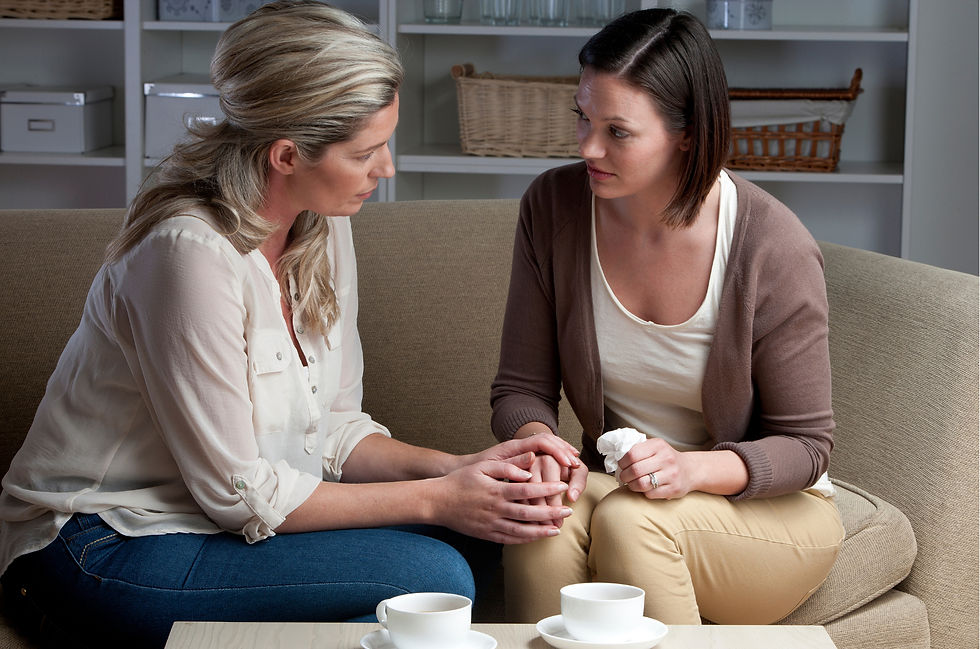Parenting Strategies for Children with FASD & Trauma
- Sandra Flach

- Aug 12, 2021
- 3 min read
How is your summer going? Mine has been exhausting—parenting teens with FASD should be an Olympic event! Some days are harder than others. I find encouragement from others on this journey. Like my friend Robbie Seale of the FASD Family Life Podcast. She says, “The struggle is real but so is success.” Recently, we achieved some parenting success I’d like to share with you.

The Struggle
“No, I’m not mowing the lawn.” My fifteen year-old son stomped down the hall and disappeared into his room. His dad stood in the kitchen shaking his head.
What teenager wouldn’t want to be let loose on a zero-turn riding mower and get paid for the job? The kind with a brain-based disability such as Fetal Alcohol Spectrum Disorder (FASD)—like our son.
For months we’d been trying to engage him in activities outside his bedroom. Since Covid, our son preferred isolation over interaction. The outdoor activity seemed a perfect remedy—plus he already knew how to run the mower. So, why the flat out refusal? Is this kid a lazy teenager or could something else be going on?

What does the brain need to do?
A week before the above scene, I completed a six week FASD training for parents and professionals through FASCETS. We learned about the impacts of prenatal exposure to alcohol and how it changes the structure and function of the brain.
The trainer taught us to ask ourselves, What does the brain need to do in order to accomplish a certain task? I decided to apply this question to discover why my son was refusing to mow the lawn.
What does the brain need to be able to do in order to mow a lawn?
• Plan where to start and stop
• Decide where to mow (direction, around objects, etc.)
• Navigate mower (steer, gas, brake)
• Filter out the loud noise, smells and vibrations
• Stay focused
Individuals with an FASD have difficulty with planning, decision making, focusing, and sensory processing. The simple task of mowing a lawn is actually quite complex for people with a brain-based disability.

Strategy for Success
A person with an FASD can achieve successful outcomes if they have the proper supports and accommodations. To help our son experience lawn mowing success we applied the following strategy:
• One-on-one support from Dad throughout the process for several mowing sessions
• A pattern was established for where to start and stop—like following a mowing map
• The same course was followed each time
• Dad offered abundant praise (even if a spot was missed)
• Ear plugs provided to filter out noise
• Expectations were set according to what our son’s brain could do
After a couple weeks of following this process, our son was able to mow the lawn independently. Lawn mowing is now part of his weekly routine. And he willingly does it—without too much complaining.
By providing accommodations such as one-on-one instruction, repetition, and praise, our son learned to mow the lawn. The success he experienced improved his self esteem and motivated him to try other activities.

Now weed whacking has been added to his skill set. This chore seemed a natural fit for our teen who is physically strong and sensory seeking. My husband followed the same strategy listed above to teach this new chore. While supervision is required to make sure he wears the proper clothing and eye protection, our son is experiencing success—and our yard is looking pretty good too.
Keys to Success
If you are parenting a child with trauma, an FASD, or other brain based disability (diagnosed or not) there is hope. Remember these keys to success:
• What does your child’s brain need to do to perform the expected task?
• If your child has a brain-based disability—can their brain perform the task?
• What support does your child need in order to complete the task?
• Provide the necessary accommodations for success
• Praise even the tiniest of victories

This parenting journey is hard and filled with struggles—ours and our kids’. There is hope for success—and it begins with us.




Comments